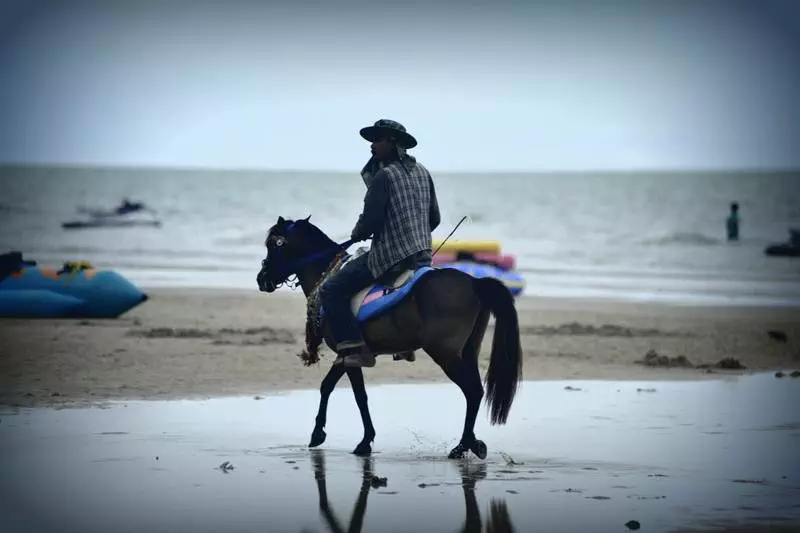
Yep, these are some colorful characters here — and proof that stories can live on well past the author’s lifetime. It turns out all three of the personalities mentioned in the title are characters in one of Thailand’s most famous poems.
Meet Phra Sunthorn Vohara (1786–1855), better known as Sunthorn Phu, or Thailand’s most famous poet. His most famous epic poem, Phra Aphai Mani (Prince Aphai Mani, or พระอภัยมณี in Thai) runs 30,000 lines long, and was began in prison when he was serving a sentence for fighting.
The poem follows Prince Aphai Mani, who plays a magic flute that causes people to sleep and eventually die. Aphai was later kidnapped by a giant that transformed himself into a beautiful girl… and then the plot gets weird and long-winded. Sunthorn is credited with breaking tradition and writing in a more plain style than his florid contemporaries.
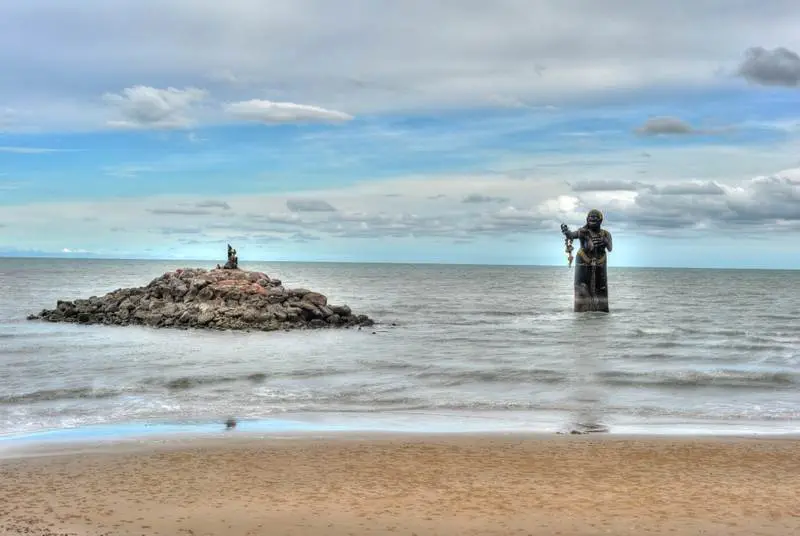
He wasn’t exactly a role model though — his Wikipedia page mentions his alcoholism and having an affair — even though he was King Rama II’s court poet. He was awarded the title of ‘Khun’, which was stripped away after daring to correct one of the King’s own poems. It was published in installments over twenty years, though for a time it was left unfinished. It was the daughter of King Rama IV that asked Sunthorn to finish the poem; later on, Rama IV gave Sunthorn the title of ‘Phra’ (Prince). It was in 1986 — the 200th anniversary of his birthday — that UNESCO honored him as a great poet.

The statues date to 1982, as best as I can tell, just a few years before Sunthorn was to be recognized. You can reach these in low-tide, though I wasn’t about to take the chance with my camera… That’s Aphai Mani on the left, playing his flute, while Pee Seua Samut beckons to him. The epic has as much a part of Thai culture as, say, Homer’s epics in the Western world. Bear in mind none of this is visible on-site, which is a real shame. If it were, it would explain why there’s a six-meter tall she-demon rising out of the water:
Pee Seua Samut — the giant that turned into a woman and bore a child with our flute-playing prince.
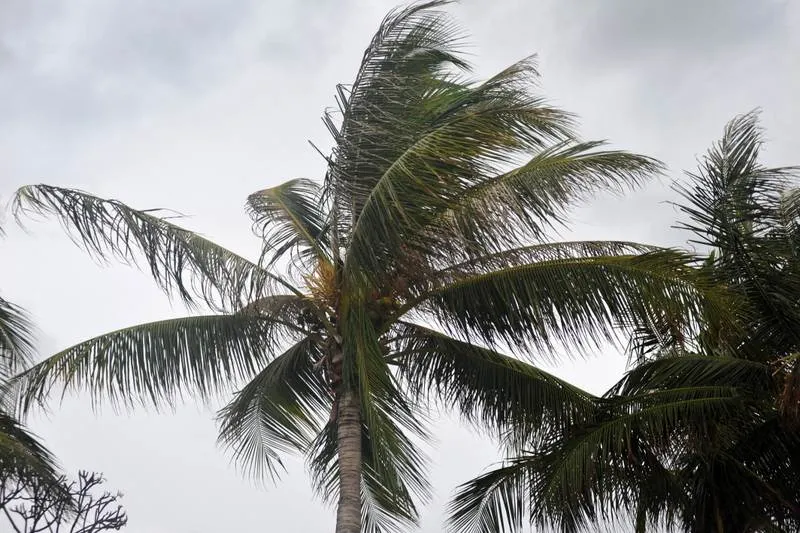
Just in case it wasn’t clear, you’re on a fairly peaceful beach here — take some time, kick off your sandals, and take it in. You’re probably not in too big a hurry, and there’s more to see beyond the statues in the water.
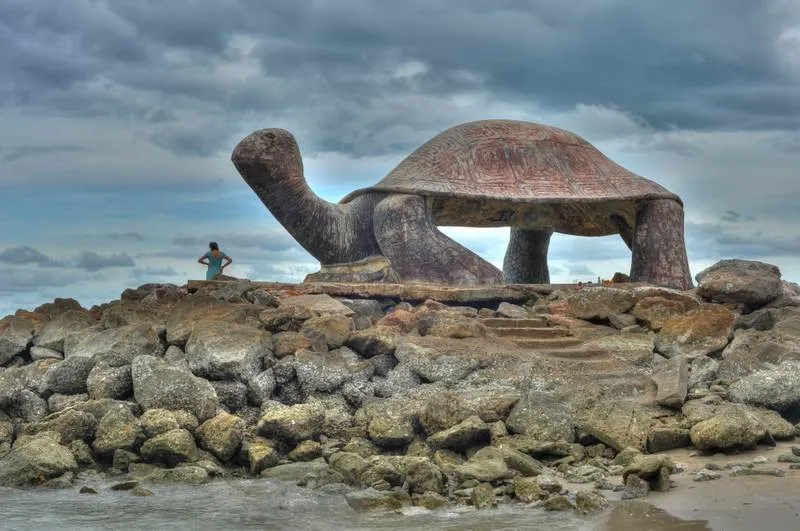
One massive turtle. The epic poem describes interactions with a wide assortment of animals, humans, and magical elements, so a giant turtle doesn’t surprise me in the least.
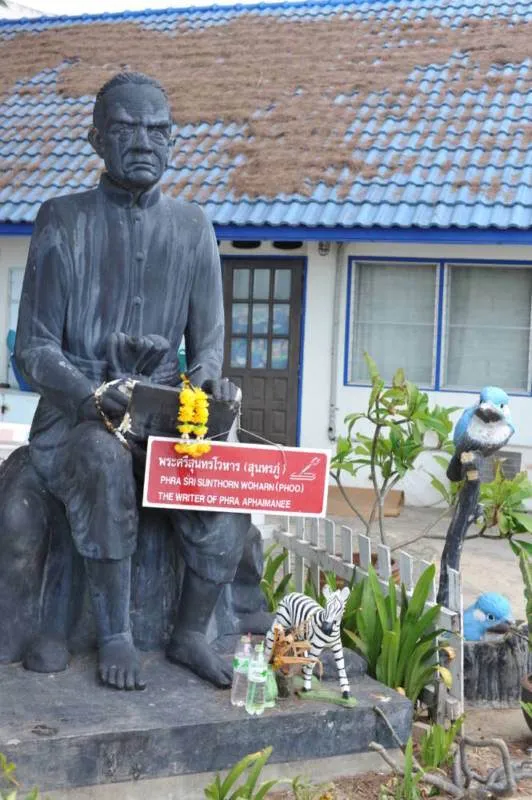
There he is — the writer himself. The look on his face suggests he was sitting on something sharp as he was being sculpted…
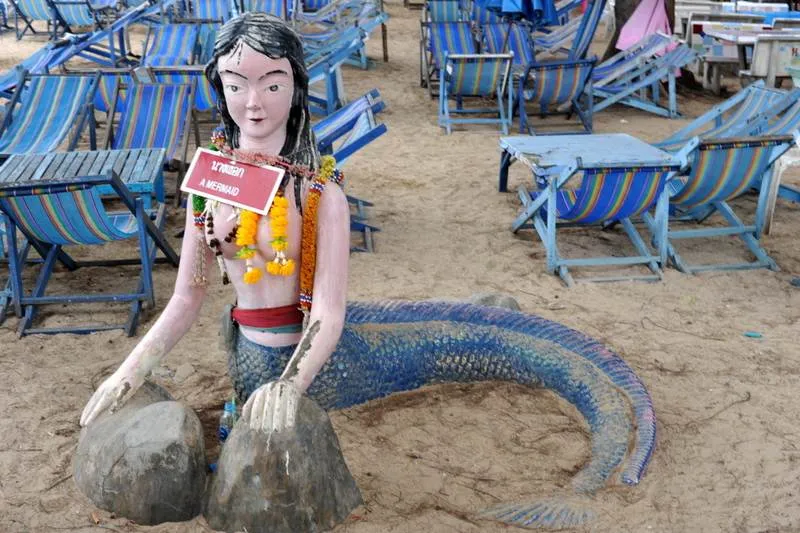
A family of mermaids helps Aphai and his son escape from the giant.
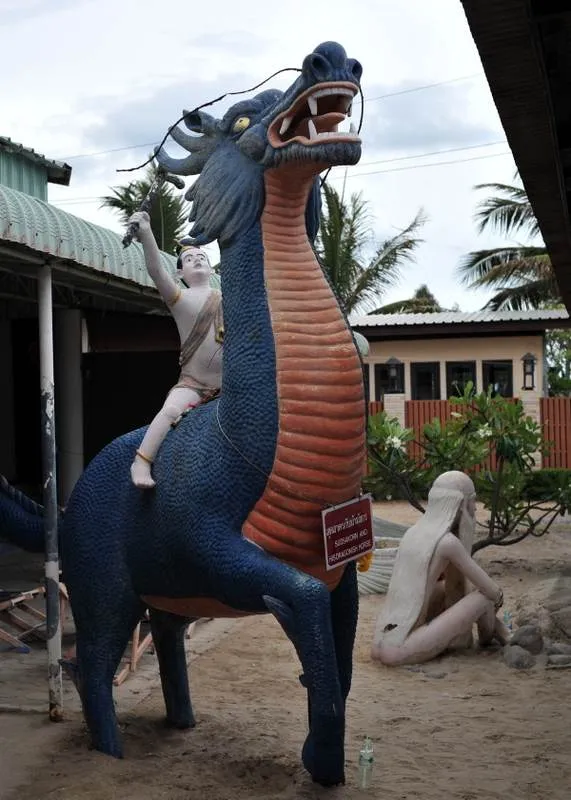
So how does the story end? I’m so glad you asked. At the risk of leaving out a lot of the action, our piping Prince meets a hermit, take refuge in Buddhism, and becomes a monk. The story winds its way through and around more characters than a Game of Thrones episode, so it wouldn’t surprise me to see this story end up on some more big screens in the not-too-distant future.
Being somewhat remote, you’re better off counting this as a ‘rent-a-motorbike’ sort of outing. Taxis know where this place is, of course, though you’ll probably pay more for that than you might for your hotel room. If you’re interested in making a day of beaches in the area, start from or get to Cha-am beach — a few locals offer their cars as taxi services.
Name: Puek Tian Beach AKA Hat Puek Tian (ปึกเตียน)
Address: Tambon Puek tian, Chang Wat, Phetchaburi 76130 (GPS: 12.946533,100.034058)
Directions: Public transportation’s a tough one — your best bet is a taxi from Cha-am or Phetchaburi.
Hours: Open 24/7, though the restaurants and bars tend to be best from afternoon to evening.
Admission: free
Phone: 0–3247–1005
Website: http://www.around-chaam.com/puek-tian.html


